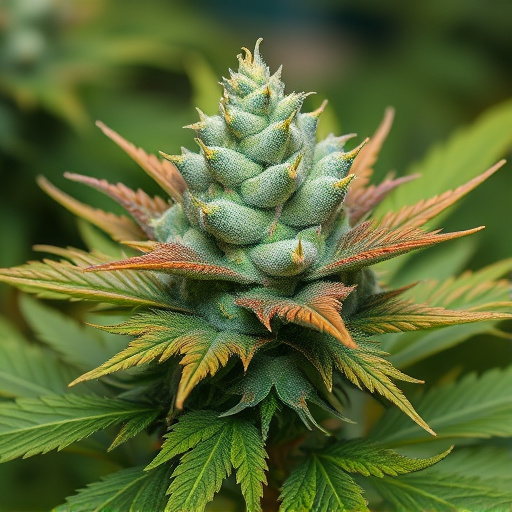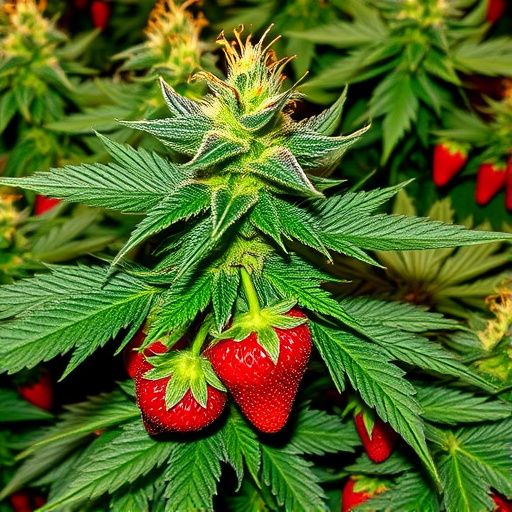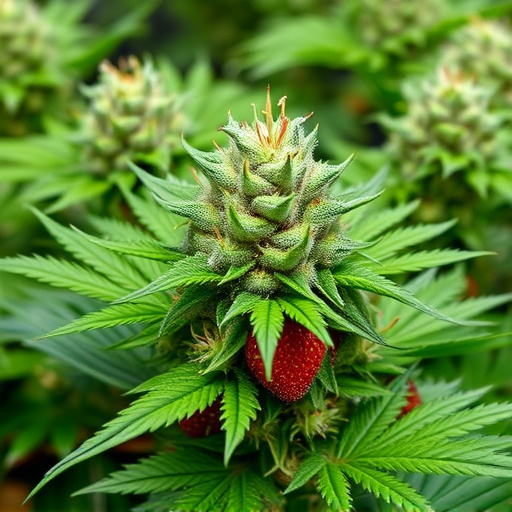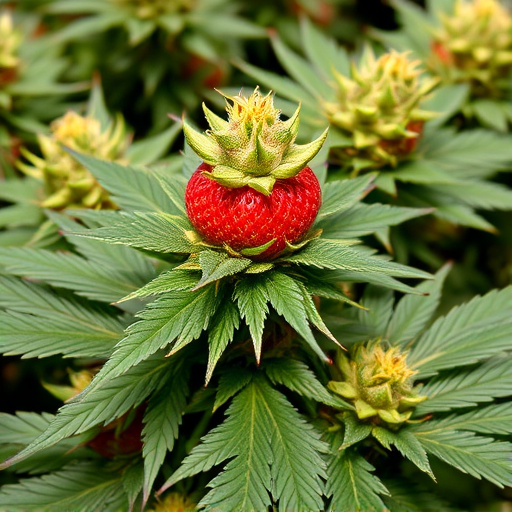THC in strawberry cannabis strains interacts with the body's endocannabinoid system, affecting hunger hormones like leptin and ghrelin. This interaction can lead to increased appetite, beneficial for treating conditions like anorexia or cachexia. Balanced cannabinoids in these strains offer potential therapeutic benefits, but individual responses vary; proper dosage and monitoring are crucial for safe use.
THC, the psychoactive compound in cannabis, has intriguing effects on our appetite. This article explores how THC interacts with the body’s endocannabinoid system to regulate hunger hormones, potentially offering both benefits and considerations for users. We delve into the specific role of strawberry cannabis strains, known for their unique terpene profiles, in modulating these physiological processes. Understanding these dynamics can provide valuable insights for those leveraging cannabis therapeutically or recreationally.
- Understanding THC and Its Interactions with the Endocannabinoid System
- The Role of Strawberry Cannabis Strains in Regulating Hunger Hormones
- Potential Benefits and Considerations for Users
Understanding THC and Its Interactions with the Endocannabinoid System

THC, or tetrahydrocannabinol, is the primary psychoactive compound found in cannabis. It interacts with our bodies through the endocannabinoid system (ECS), a complex network of receptors and enzymes that regulate various physiological processes, including appetite and hunger. The ECS modulates hunger signals by influencing the release and action of hormones like leptin and ghrelin.
When THC binds to CB1 receptors in the brain and other organs, it can alter these hormone balances. This disruption is thought to contribute to the well-documented effect of cannabis on appetite, often leading to increased hunger, a phenomenon that has been studied particularly in relation to strawberry cannabis strains known for their high THC content. Understanding these interactions offers insights into both potential therapeutic applications and side effects related to cannabis consumption.
The Role of Strawberry Cannabis Strains in Regulating Hunger Hormones

Strawberry cannabis strains, known for their sweet aroma and fruity taste, offer more than just a delightful sensory experience. The compounds within these strains, particularly those containing higher levels of THC (tetrahydrocannabinol), play a significant role in regulating hunger hormones. Research suggests that THC interacts with the endocannabinoid system, which governs appetite and satiety. This interaction can lead to altered eating behaviors, often resulting in increased appetite or changes in food preferences.
For individuals looking to manage hunger, especially those dealing with conditions like anorexia or cachexia, strawberry cannabis strains could provide a natural approach. The balanced combination of THC and other cannabinoids in these strains may help stimulate appetite, encouraging consumers to eat more. However, it’s crucial to note that the effects can vary from person to person, and proper dosage and consumption methods should be understood to ensure positive outcomes while minimizing potential side effects.
Potential Benefits and Considerations for Users
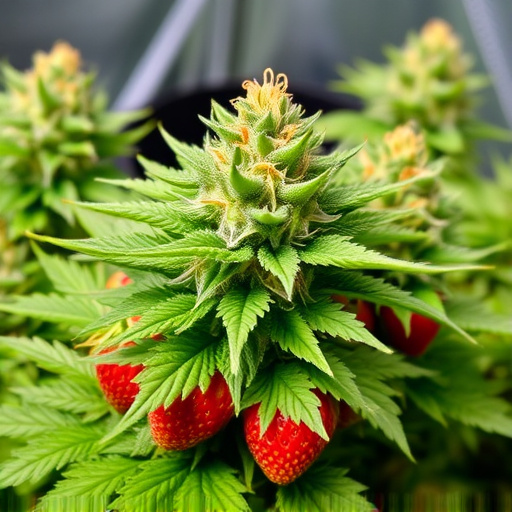
The potential benefits of THC, particularly in moderation and for specific users like those looking to manage hunger, are a growing area of interest in the medical community. Studies suggest that THC can interact with the brain’s endocannabinoid system, which plays a role in regulating appetite and food intake. This interaction may lead to reduced feelings of hunger, making it a promising tool for individuals dealing with conditions causing weight loss or difficulty maintaining a healthy diet.
When considering the use of THC, especially through strawberry cannabis strains known for their balanced profiles, users should be mindful of potential side effects. While some people may experience increased appetite, others might face difficulties in controlling hunger due to THC’s impact on these hormones. Individual responses vary, and it’s crucial to start with low doses and monitor personal reactions to ensure a positive and safe experience.
THC’s interaction with the endocannabinoid system offers a promising avenue for understanding hunger regulation. Strawberry cannabis strains, known for their unique cannabinoid profiles, may provide a natural approach to managing appetite. While further research is needed, these findings suggest that specific cannabis strains could offer therapeutic benefits, particularly for individuals facing eating disorders or weight management challenges. As we continue to explore the complex relationship between THC and hunger hormones, strawberry cannabis strains may emerge as a valuable tool in promoting balanced eating behaviors.


